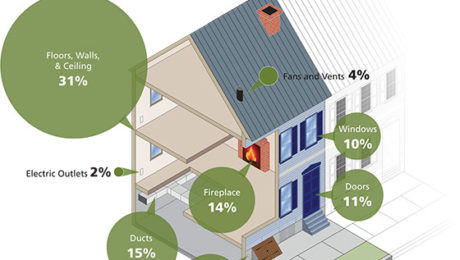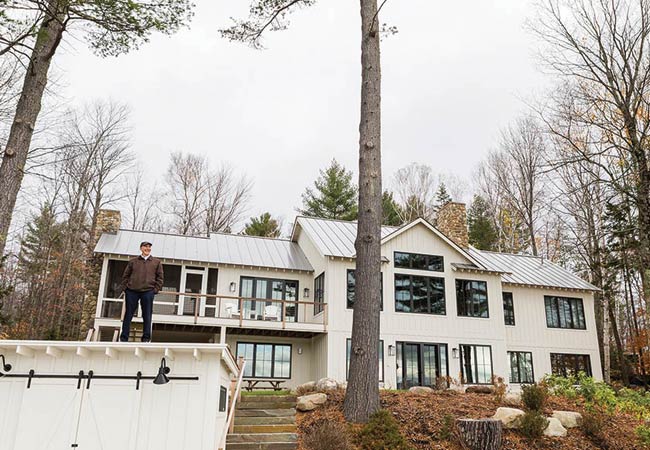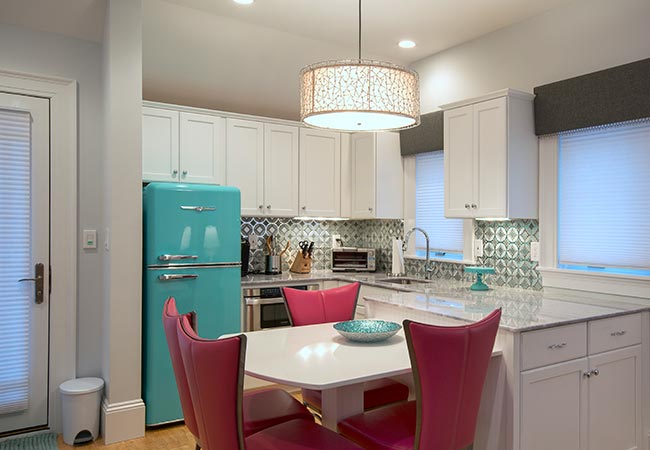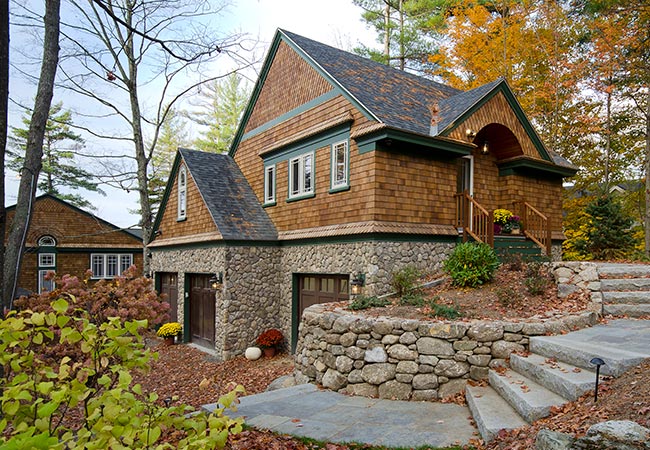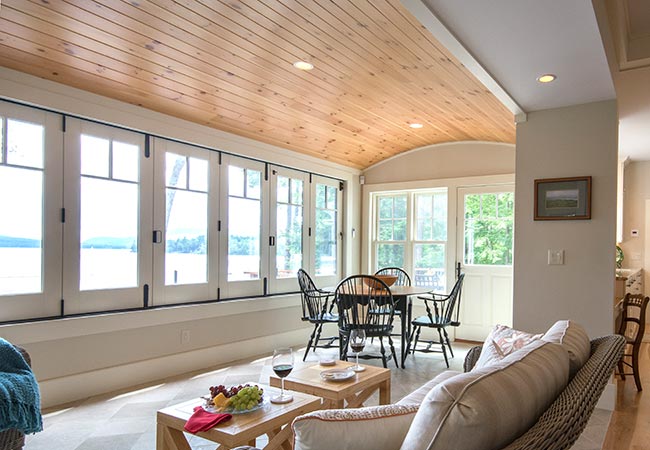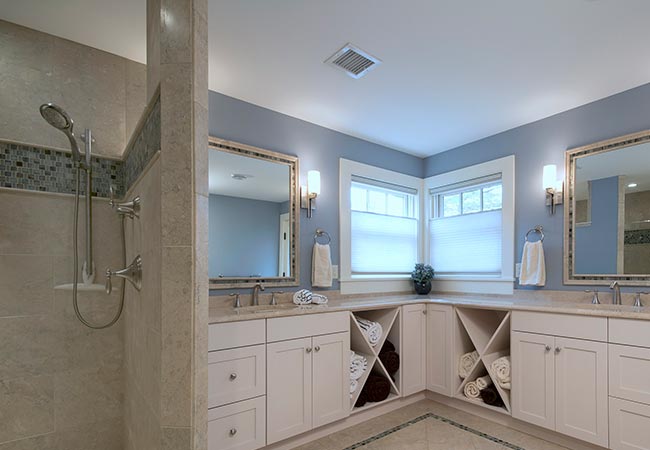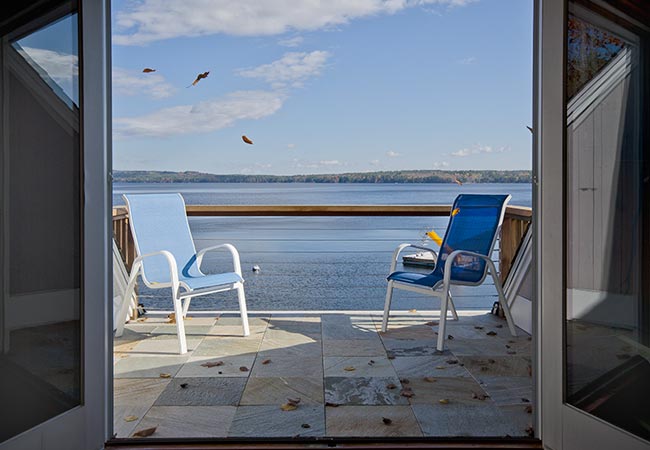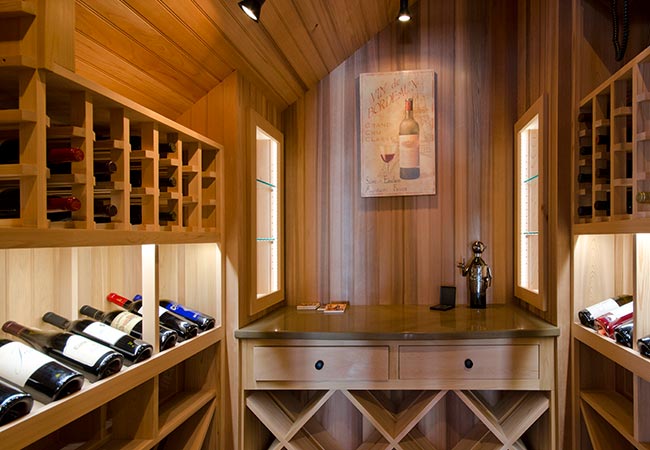“Wine is the most civilized thing in the world.” Ernest Hemingway
There is little that symbolizes our sense of romance more perfectly than a bottle of wine. Wine becomes the embodiment of celebration and merriment as we raise our glasses, make our heartfelt toasts and clink our glasses!
Today, more homeowners are discovering the pleasures of storing wine in their homes. Wine cellars, once considered an indulgence, have become more accessible, convenient and practical. There are a wide variety of options available, ranging from a small under counter cooler to a walk-in wine cellar with an adjacent “grotto” tasting room. Small coolers can store 25 to 100 bottles; larger refrigerated cabinet units can hold up to 500 bottles. With a walk-in cellar the sky is the limit, and it will accommodate the wines that are ready to drink now as well as that special Napa Cabernet or French Bordeaux that will improve over years of cellaring.
 For many years, my own “wine cellar” was a spare closet in the basement, a marginal solution at best. I became inspired to design and build my own real wine cellar after Robin and I attended a meeting in the Napa Valley area. We spent an extra five days touring the vineyards and sampling many wonderful wines. After seeing some incredible wine cellars and tasting rooms, our old closet in the basement no longer measured up! However, there was a 6’ by 7’ corner of my basement workshop next to the family room that I really wasn’t using to its potential . . .
For many years, my own “wine cellar” was a spare closet in the basement, a marginal solution at best. I became inspired to design and build my own real wine cellar after Robin and I attended a meeting in the Napa Valley area. We spent an extra five days touring the vineyards and sampling many wonderful wines. After seeing some incredible wine cellars and tasting rooms, our old closet in the basement no longer measured up! However, there was a 6’ by 7’ corner of my basement workshop next to the family room that I really wasn’t using to its potential . . .
I began my education on wine cellar construction. The three enemies of wine are heat, light and vibration. Of these, heat is the major concern. Most experts agree that a constant temperature of about 55 degrees Fahrenheit and a relative humidity of 60 to 70% are ideal for long-term wine storage. Temperature fluxuations can push wine past the cork as it expands and suck air into the bottle as it cools, increasing the ullage and therefore the amount of oxygen. The addition of oxygen can age wine prematurely.
As I started to gather information regarding wine cellars, I mistakenly believed that a basement area would be a suitable place to site a passively cooled cellar. I read the only book that I could find on wine cellar construction and the author convinced me that it is extremely difficult to regulate the temperature in a passively cooled wine cellar. In fact he recommends insulating all walls equally, even the side facing the foundation. The book, “How and Why to Build a Wine Cellar, 3rd Edition” by Richard M. Gold, Ph.D. is available on Amazon.COM and is full of great information. I also gleaned many details for wine racking from racking suppliers on the Internet.
 Here are a few of my notes on the construction of my cellar:
Here are a few of my notes on the construction of my cellar:
FRAMING:
Standard 2×4 or 2×6 framing is fine as long as you can fit the required insulation in the walls and ceiling. You may need to “furr-out” existing framing.
VAPOR BARRIER:
A vapor barrier is required if refrigeration is used. The plastic should be applied to the warm side of the wall and ceiling. In this case that would the exterior of the cellar.
INSULATION:
The general rule of thumb is “more the better”. Minimum requirements are R-19 in the walls and R-30 in the ceiling. You can use fiberglass batts, Styrofoam or foil-face rigid insulation, sprayed foam or blown-in insulation. Use whatever works in your situation.
AIR INFILTRATION BARRIER:
I used Tyvek on the interior of the walls and ceiling, and taped the joints to further limit any migration of air.
INTERIOR WALLS & CEILING:
You can use a wide variety of wood paneling including cedar, mahogany and redwood. This is generally left without any sealer or finish so that moisture is not trapped under the finish. Drywall can be used if it is the moisture resistant green board type. It can be painted with mildew resistant latex paint.
CELLAR DOORS:
An exterior grade door must be installed as a cellar door. It is very important to have complete weather-stripping on the jamb and a good quality sweep on the bottom. Any glass inserts must be double-pane insulating glass.
FLOORING:
Tile can be used, but a concrete floor can be fine as is or stained with an opaque concrete stain.
LIGHTING:
Lighting can really enhance the ambience of a cellar. Use dimmers to control the brightness (and the heat!). Rope lighting is easy to install and can be used for display areas.
REFRIGERATION:
There are several different types of cooling systems including units that exhaust into an adjacent room and split systems that have condensing units located outside the house. We used a “WhisperCool” through wall unit and it is performing beautifully. Whatever unit you use should be sized for the cubic space that you have.
WINE RACKING:
The possibilities are numerous and range from boards on cement blocks to custom designed racking that looks like it came from the finest furniture craftsman. I used red cedar to match the paneling and left it unfinished.
No — it’s a huge deal! Our customers often look confused when we address their insulation questions by bringing up air barriers and air leakage. I mean, “Why are you talking about air leaks when I asked about the insulation?” But controlling air leakage is profoundly important for anyone interested in saving money, saving energy, and improving comfort, especially in houses insulated with fiberglass – which means, you know, almost all of them.
The concept of air sealing ties in with how insulation works and how heat moves. Thermal energy moves in three different ways: by conduction, convection and radiation. Conduction is heat transfer between two solids, such as what happens why you burn your hand on a hot pan handle. Radiation is the infrared radiation that warms on contact; think of the sun beating down on your skin. Convection, the heat transfer mode that we’re interested in, is heat movement in a fluid medium like air and water.
There’s a building science concept known as the stack effect, a phenomenon which is well known in the industry and not at all outside of it. Simply put, the stack effect is convective heat movement at work. Warm air is more buoyant than cool air, so it naturally floats upward through your house. When the outdoor temperature is colder than the indoor temperature, the warm updraft grows stronger. This updraft creates a slight but definite positive air pressure near the upper levels of your house, forcing air to escape from every nook, crack, and hole it can find.
This air convection moves heat out of the top of your house, and as an added bonus, creates a slight suction (negative pressure) in the lower part of your house. For every cubic foot of warm air escaping from the top, a cubic foot of chilly winter air seeps in the bottom. (I mean, if you live in Maine.
Fiberglass insulation does not help! The air permeability of fiberglass insulation compounds this problem — or at least does absolutely nothing to stop it. Most homeowners think, “Hey I have two feet of pink fluffy stuff up there. That’ll handle it.” Fiberglass slows conductive and radiant heat flows, but not convective heat loss. It may not be as bad as an open window, but it is closer than you’d care to think. And I’ve seen a few hundred blower-door tests to back this statement up.
Warm air is flowing out the top of your house, and cold air is sneaking in at the bottom. Pop quiz, hot shot: what do you do? Seal the leaks!! Air sealing is the answer here. In the attic, sealing around chimney chases, plumbing chases, recessed lights, framing seams … really, everywhere. In the basement, sealing the sills, oil supply pipes, bulkhead doors, and other penetrations.
The majority of new homes are insulated with fiberglass and most builders pay absolutely no attention to air flow and air leakage. This is something that new building codes are working to rectify. Fiberglass insulation stops air flow not at all — yet air leaks are often the single largest source of heat loss.
Comfort is also a major factor. It’s a rare homeowner who has ever thought they were uncomfortable because of poorly insulated walls. Leaky windows or drafty rooms … another matter entirely. Air sealing homes is one of the most cost-effective ways to save money and feel more comfortable in your home.
This was adapted from an article by Erik North, the owner of Free Energy Maine, is an energy auditor and home performance specialist in Westbrook, Maine. He is also the author of the Energy Auditing Blog.








































